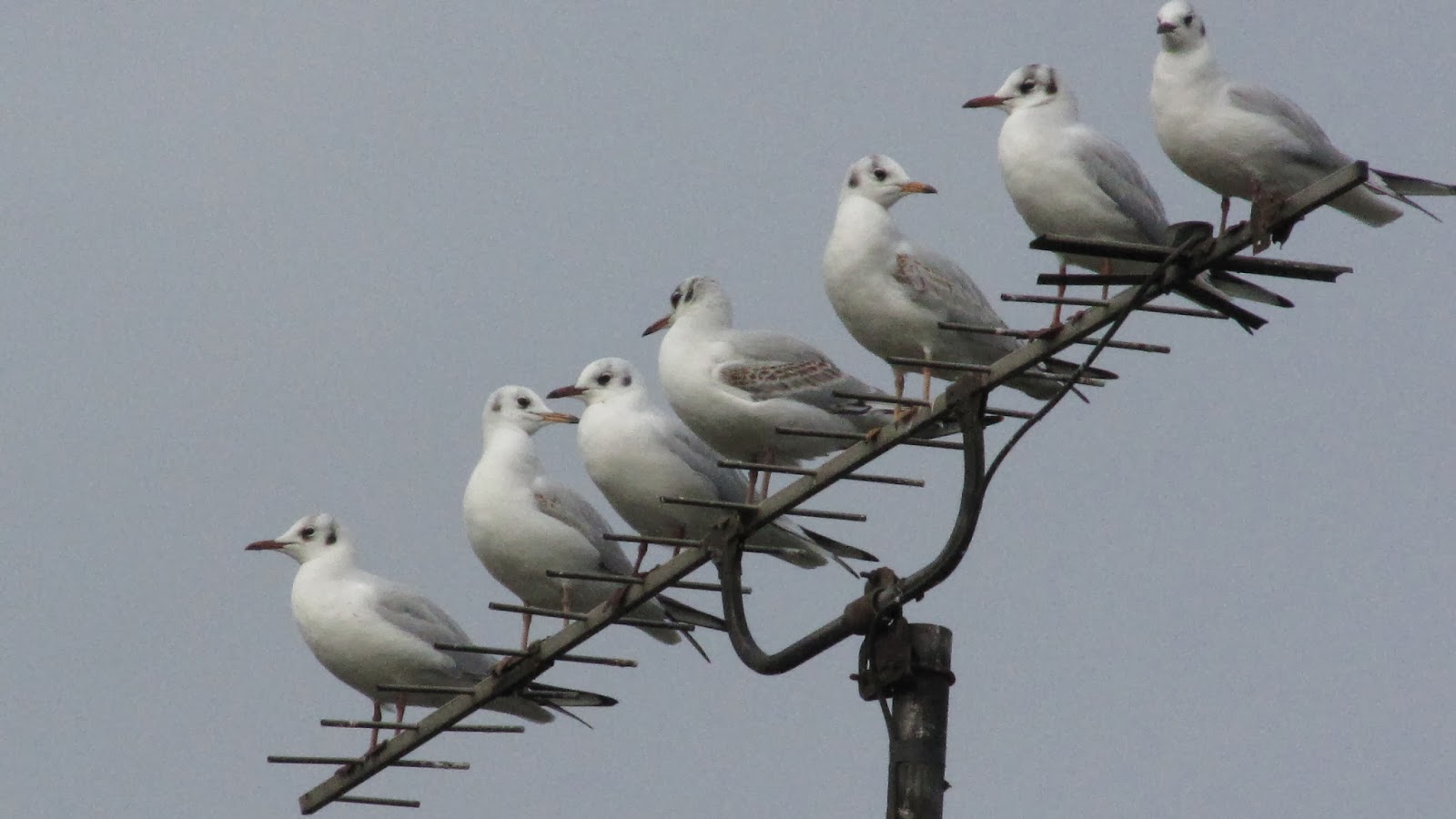Living On The Edge
 |
| Black-headed gulls - photo by Jo Sinclair |
Perched in lines on TV aerials and rooftops with one eye on the tractor action and one eye on the gardens, the black-headed gulls have been biding their time. But the day after the RSPB's Big Garden Birdwatch they chose the moment to swoop onto my shed roof to dine on the puff pastry I'd put there a few hours before. There was a spectacular flurry of fifteen of them. After a while the resident starlings didn't even budge.
 |
| Greenbelt - Photo by Jo Sinclair |
Pretty robin song pours competitively from every other tree, but the delicacy belies the reality. Hearing a cheeping, screaming commotion the other day, I did what you're not supposed to do if you're more naturalist than sentimentalist; I intervened. One robin had cornered another and was attempting to peck it to death. I put something in the way so the victim (which was lodged half in, half out underneath a fence) could recover in peace.
I chose the wrong day for my RSPB bird count, recording only one blackbird and three sparrows in the rainstorms during the allotted hour. I'd hope that citizen science isn't a bit, well, skewed at times like this. So frustrating not being able to boast what's taken a fancy to your peanuts and fat-balls.
Comments
Post a Comment